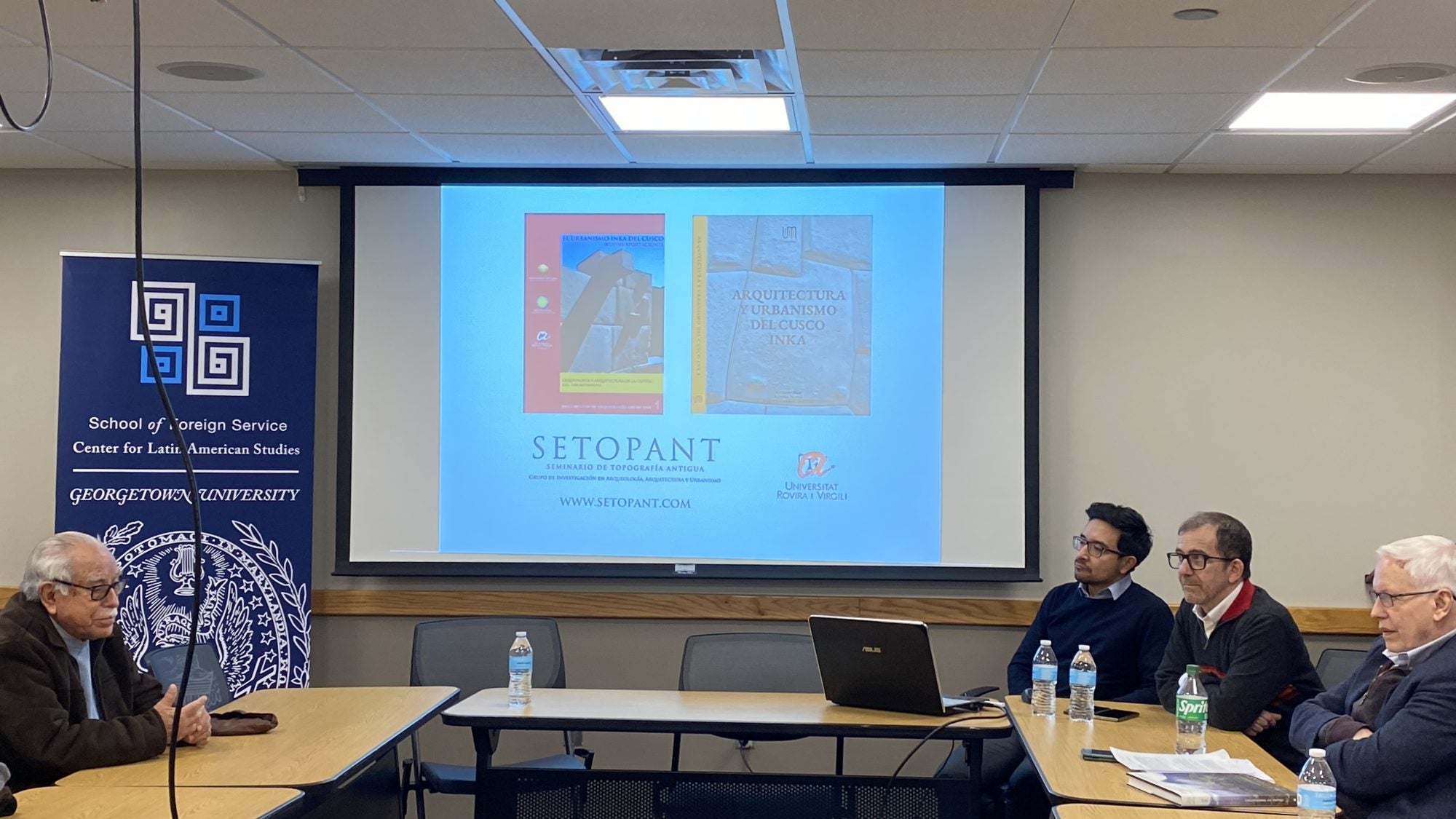On Tuesday, February 18, from 12:30 to 2:00 PM in Intercultural Center 462, Georgetown University main campus, Georgetown students and faculty gathered for an exciting event on, “Cusco, Inka Empire Capital City: New Perspectives on its Architecture and Urbanism.” This discussion featured Professor of Archaeology at the University of Southern Catalonia, Ricardo Mar, and Professor of Architecture at the University of Southern Catalonia, Alejandro Beltran-Caballero, with CLAS Adjunct Professor Kevin Healy as the discussion moderator.1
Their presentation, “Visualizing Inka Cusco,” was a culmination of their extensive research outlining the urban study of Inca Cusco and its three-dimensional recreation using new digital tools for graphic documentation and 3D modeling. Through elaborating the Archaeological Chart of the Historic Center of Cusco and combining it with the interpretation of an aerial photographs taken in 1956 and the underground survey using georadar strategy, it was possible to confirm that the foundation of the Inca capital meant the complete occupation and environmental transformation of the upper Watanay Valley. From a large and dense urban Ceremonial Center located at the top of the valley, the Qhapaq Ñan, the network of roads at the service of the State, linked the provincial centers with the capital of the Inka Empire, the Tawantinsuyu. The researchers explained that the dispersed settlement model can only be understood from the Andean perspective of shaping the Inka cultural landscape.
The presentation was followed by a Q&A where students, researchers, and faculty discussed regional comparisons with Brazil as well as the impact of religion on their study. The researchers also explained how and why they chose their specific area of research.

